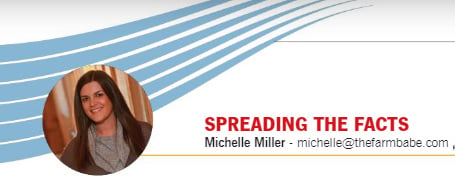Agriculture is much more than just food on your plate. Nearly everything you interact with daily comes from a farm in some way, shape, or form. For example, think of the clothes on your back, the make-up or lip balm you may be wearing, and the leather watchband on your wrist, all of which come from agricultural products and byproducts. On top of that, an airplane has interacted with many of these products along its journey.
Byproducts are materials we get as secondary to our primary product. When we harvest livestock for meat, we also get bones, skin, and bodily fluids. Of course, meat is our primary goal for harvesting livestock. Still, we may only get as little as 50% of edible materials from an animal, so we must figure out alternative uses for the remaining parts to reduce waste. A true “vegan” lifestyle is pretty much impossible, considering agricultural byproducts are all around us. Bones can be utilized for supplemental calcium in livestock feeds and can be used to refine other products, like sugarcane, into crystalized sugar. Skins are generally harvested for leather, and this is where the colloquial name for a football became ‘pig skin’ since that is what they were originally crafted from. Bodily fluids sound gross, but they provide so much for our everyday lives. Collagen is harvested from livestock and used in beauty and food products like gummies and jelly. Collagen can make capsules for pills, adhesives, and many other materials. Stearic acid is a component collected frequently from cattle processing and used in things like plastics, PVC, candles, cosmetics, and so much more. Animal byproducts can be found in fertilizer, marshmallows, soaps, biodiesel, fireworks, perfumes, linoleum, deodorant, paper, toothpaste, batteries, and even the roadways and tires on your vehicles! We get so much more from harvesting livestock than meat, which is an integral part of our lives.
Livestock byproducts aren’t the only things hidden in everyday items. We see a lot of byproducts and non-food items on our store shelves. We think of fiber products, like cotton, as just a non-food items. However, it does produce a food item for livestock! Cottonseed and cottonseed hulls are used as supplemental feed for livestock to increase fiber intake and again to help prevent items from being wasted. Some products grown, like rapeseed, corn, wheat, and sugar, are developed strictly for use in biofuels and will not enter the food systems. Many plants are grown for industrial uses and not for food. Ornamental plants can be developed for plant nurseries, cut flowers, essential oils, or printing ink dyes. Some plants are grown for botanical, herbal, and medicinal purposes. Lastly, some plants are used for building materials, paper, fabrics, padding, ropes, and other construction materials.
All of these products are integrated with agricultural products and materials. These ag items have likely seen a few airplanes over the field during its growing period. Aerial agriculturalists are essential for helping to control pests, applying fertilizers, and sometimes just scouts for pest/disease damage or even finding livestock in large areas! Aeronautics is just as crucial to our daily lives as many of the products produced from these ag byproducts would be significantly more expensive without aerial application to minimize input expenses.
Everything you might touch in a day came from farming in some way or another. Using byproducts is a great way to reduce waste and have a use for everything that we produce. I often hear about going back to the ‘olden days’ where we process our own animals and use every part in some aspect of our lives, but that is happening now on a much larger and more efficient scale. Agriculture is integrated into our lives profoundly, from the food on our tables, to the clothes we wear, to the products we use.








